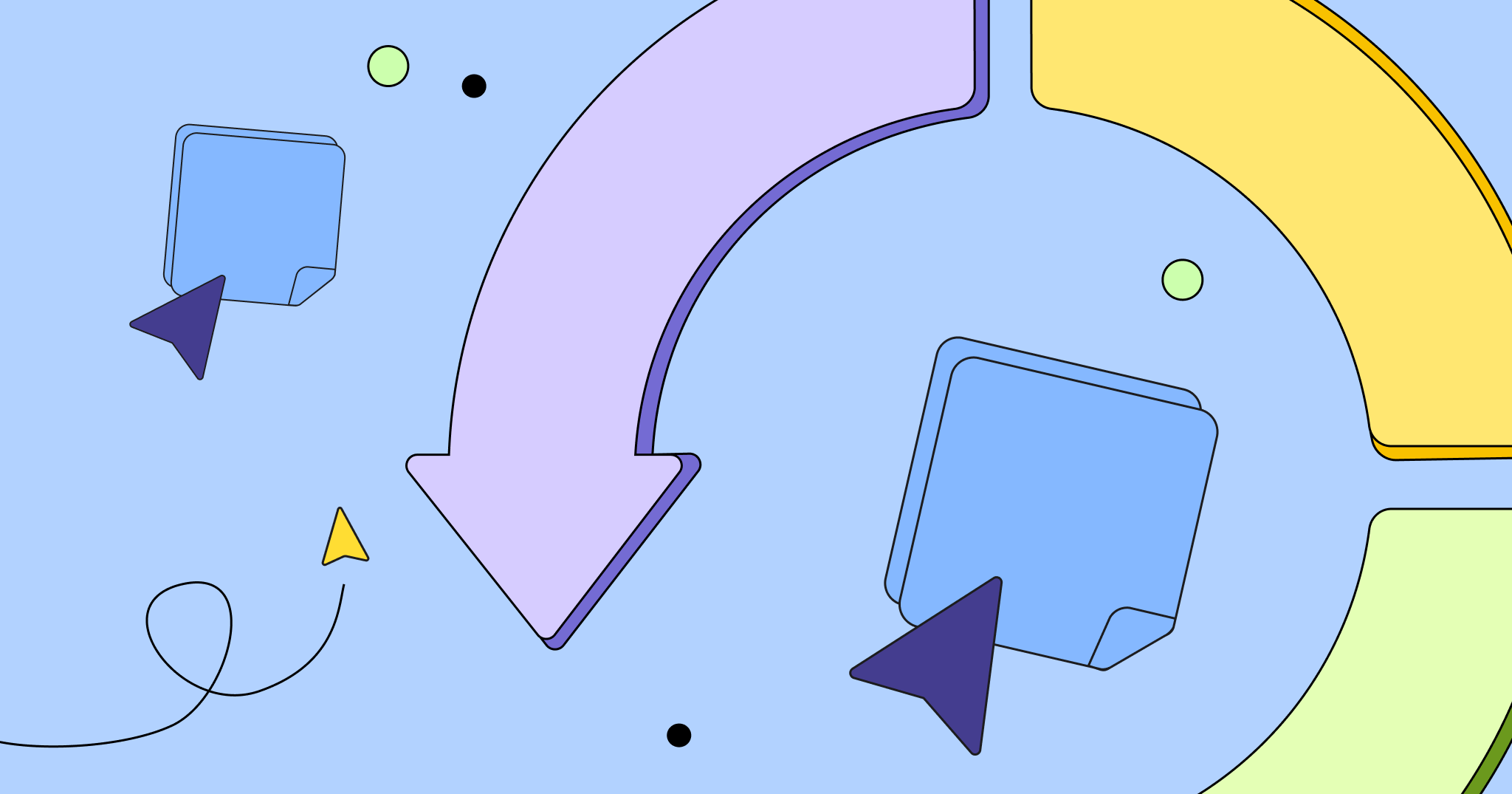The dynamics of distributed teamwork can be complex and difficult to predict. Cross-cultural divides, communication silos, teams split up by location, uneven distribution of leadership, and hub-specific micro-cultures are all challenges that can arise when a company isn’t fully co-located. That’s why for one week each year, the entire distributed Miro team comes together in a single location to work and play together at our annual offsite.
At Miro, we’re a rapidly growing start-up with offices in four locations across thirteen hours of time zones. Each office holds a mix of teams spanning product, operations, design, marketing, sales, and more. That’s why we made the strategic choice to invest in an in-person offsite to regroup, recalibrate, get to know each other, and come together as one united company.
While company offsites are resource-rich investments, we believe that a well-designed annual event can be game-changing for company culture, operations, and collaboration. To make the most of our time together, our People team carefully curates an offsite event. It combines working sessions, learning and development, department-specific days, and extracurricular activities to get to know each other across contexts as both teammates and people.
Looking to improve your distributed team’s collaboration? Give Miro a try
Distributed vs. remote teams: what’s the difference?
Although both exist within a professional virtual space, there are a few important differences between remote and distributed teams.
The word distribute means to spread out or share, which helps us understand what a distributed team is — teams of people who are separated geographically but work together in a team. Tech companies use distributed teams because it can be challenging to find people with the right skill sets within the same geographic location.
Remote teams are different as these types of teams usually all originate from one central hub or on-site location. Usually, remote employees are all from the same geographical region, but they no longer work on-site. This type of team has become increasingly popular over the past few years.
What is an in-person offsite?
Offsites are meetings and collaborations that happen outside of the business building — or in other words, not on site. In the context of businesses and distributed teams, offsites are events where people who work in distributed or virtual teams can have more meaningful communications and connections than a simple video call.

A standard offsite could be a company getaway or retreat where employees have the chance to build stronger relationships to improve the working environment.
Working in a remote environment doesn’t always allow for these types of important connections to be built. Many experts in the virtual industry believe in the effectiveness of hosting in-person offsites, even for remote employees or teams who work in distributed workplaces.
Why organize offsites for your team?
As companies start to realize the advantages of having healthy workplace relationships, more companies are hosting regular offsites for their teams.
Here are a few of the many benefits that an offsite can have for your company.
1. It builds relationships
In today’s world, remote and distributed work has increased dramatically. These types of working environments aren’t always conducive to creating strong workplace relationships, especially when the only time employees see each other is through their computer screens.
Organizing an in-person offsite will allow people who have never met to see each other in person and communicate face to face non-digitally. It could spur the start of friendships, which could lead to increased collaboration in the workplace.
2. Creates a safe space for questions and creativity
During video meetings with many different participants, members might feel nervous to ask questions in front of a crowd they don’t know. Congregating together at an in-person offsite will allow people to feel more comfortable as they build closer relationships with their colleagues.
Employees who feel comfortable will express more creativity and feel safe to ask questions they otherwise might not have.
3. Gain perspective and reflect
Sometimes, people who work in distributed and remote teams don’t know the scope of their workplace. They don’t realize the potential and skills of the people they work with. Meeting your colleagues in person and being able to brainstorm together allows employees to reflect on their own employment and gain perspective on the people they work with.

4. Celebrate team success
Working in a virtual space often doesn’t allow employees and managers to take a moment to celebrate the team’s collective success. Going on a workplace retreat is the perfect environment to enjoy and celebrate the team that you are a part of.
Miro’s own offsite: feedback from the team
Miro is a company that believes in the power of an in-person offsite. Our employees have celebrated the fact that they were given the chance to enjoy spending time with their teams.
Here’s what some of our team members had to say about their experience from a recent offsite.
Opportunities for cross-functional collaboration
“The offsite was an example that nothing bonds people like teaming up to create something together. They say the only effective method for teams to build trust and cohesion is to do real work. And thanks to our hackathon, I witnessed so many new connections forming. Parties and fun are awesome, that’s for sure, but without real projects to work on together, they aren’t enough.”
—Ksenia Apolonskaya, Monetization Product Manager
“A very special moment for me was during the hackathon pitches. It was a rare opportunity to connect and share experiences that, although different, are geared towards the common goal of making Miro amazing for our users. I got to imagine myself being a part of creating something that might end up on the platform. So many lightbulbs going off!”
—Iris Latour, Customer Success Manager
Parties and fun are awesome, that’s for sure, but without real projects to work on together they aren’t enough
Problem solving in new ways
“One challenge with the offsite was actively keeping up with day-to-day work while the activities were ongoing. But what I found with the entire company in one place is that this work could get done in moments of serendipitous run-ins: bumping into people, or catching everyone from different teams for a few minutes in the corridor, in the kitchen, in the conference room, and so on to get things done. It showed me a faster way to problem-solve without formalizing the meeting structures we usually rely on to ask cross-functional questions.”
—Roman Bulbenko, Head of QA
“As someone in content marketing, to be able to sit in a room with PMs, developers, salespeople, and designers, identify a shared pain point about our workflow, and resolve the communication gap on the spot was pretty dang satisfying –and relieving too. To reaffirm shared experiences with teammates whose job functions are so far from your own is quite validating.”
—Anna Savina, Content Marketing Manager
Work could get done in moments of serendipitous run-ins
There’s nothing like mud, running, stinging bees, and collective suffering that brings people together
Practicing teamwork in new environments
“There were +25 of us that volunteered to run an obstacle-laden course. There’s nothing like mud, running, stinging bees, and collective suffering that brings people together. Our crew represented nearly every department in our company, and we broke barriers and bonded very quickly. We were all working together to overcome each obstacle — ones by design that you couldn’t conquer on your own.
Without any discussion beforehand, we were all looking out for each other, especially during the more challenging parts of the course. If anyone was falling behind, we made sure to stick together. This is what teamwork truly is about, and now we have some crazy, fond memories to reminisce about.”
—Melissa Halim, Enterprise Product Marketing Manager
“Having the opportunity to spend time with coworkers outside of the office over music, drinks, and social activities created space to connect in a more personal way and to understand each other cross-culturally. To have coworkers willing to practice new languages to and move out of their comfort zone to connect made me smile.”
—Renny Chan, Head of Acquisition
Experiencing what it means to be Miro
“Our Brand team wanted to curate the entire guest experience to identify with Miro. From arrival at the airport with Miro-branded SIM cards, Miro umbrellas and jackets for the rain, to office decor and landscaping outside (and even branded flash tattoos!) the entirety of the week my team asked: what is Miro as an experience beyond the product itself? This kind of internal branding helps build community and engagement, and builds a group sense of shared values through visual and physical manifestations of what it means to work at Miro.”
—Ivan Danyshevsky, Brand Design Manager
Cutting acrossmcommunication divides
We could relate to each other through meaningful conversation, or simply a hug
“When you are working in a distributed setup, it’s not so easy to express all of your emotions and warm wishes to teammates — instead of emojis and back-and-forth on Slack, we could relate to each other through meaningful conversation, or simply a hug.”
—Vlad Zelinskiy, Product Design Lead
“Currently we speak to each other across hubs via Slack and Zoom meetings. We share Miro boards and other documents, but the face-to-face collaboration you just can’t beat. During the offsite I was able to sit with our new Brand Design Lead and within 10 minutes we were going back and forth sharing our ideas and building off of one another — it was electrifying!”
—Brittni Cocchiara, Community Marketing Manager
Tips for organizing an in-person offsite
Ready to organize an in-person offsite for your distributed team? Keep these tips in mind to ensure your event runs smoothly.
1. Create an agenda and send it out ahead of time
For an offsite to be successful, everyone should be aligned on the mission and purpose of the retreat. Before heading off, create an itinerary or agenda for the offsite so that all employees can work together to achieve the objectives of the event. Have a crystal-clear mission and set objectives and end goals.

2. Choose the right location
Choosing the right location is fundamental to the success of the offsite. This step requires collaboration from the entire team so that everyone participating in the event is comfortable with the location and environment. It should be equally accessible to all invitees.
3. Be clear with your team about the objectives
There should be clear objectives about the purpose of the offsite and what the results should be at the end of the event. All attendees should strategically agree upon the objectives, and the outcomes should be measurable and fully committed to by the team.
For example, if the objective of the offsite is to create a new groundbreaking product, team members shouldn’t expect a vacation. The setting of objectives beforehand is crucial.
4. Prepare templates and team-building materials
One element every offsite needs is the preparation of materials beforehand. Management doesn’t want to be stumped when everyone arrives. Coming to the offsite with templates where team members can deliberate and work is essential. Miro offers a variety of excellent templates that can be taken along on your company retreat.

5. Make it fun
In the end, the offsite is all about putting your employees in an environment that contrasts with the regular day-to-day workspace. Team members should be encouraged to enjoy themselves and feel comfortable engaging in social interactions. In this kind of environment, your team members can build relationships and enjoy employee experiences as a community.
Encourage better collaboration through offsites
Remote and distributed teams can find it hard to build strong working relationships that result in collaboration and increased productivity.
An offsite carves out time for employees to come together and generate innovative ideas, solve problems, and learn more about each other.
Miro’s shared online workspace can act as the focal point for team-building activities during your in-person offsite. And, because it’s cloud-based, all your great ideas remain accessible long after you’ve all traveled home.
Are you looking for more ideas to bring your employees together? Read our post on 3 Ways to Keep Your Remote Teams Engaged.




